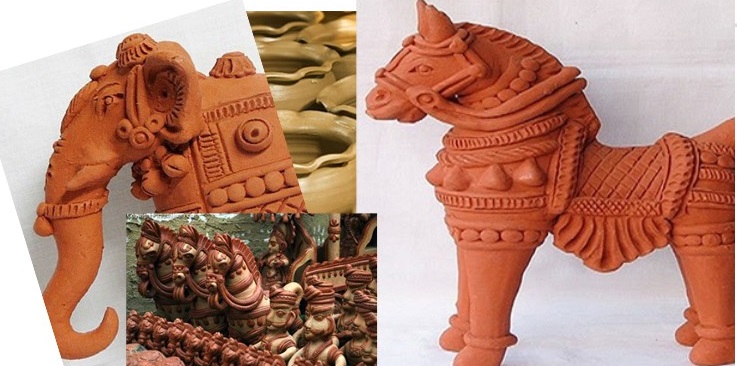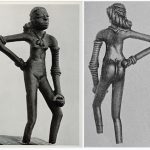
Srinagar has a long tradition of crafts and folk arts, with skills passed down from generation to generation. One of the most popular crafts of Srinagar is papier-mâché, a technique of making decorative objects using paper pulp.
Terracotta is a reflection of earth

Gorakhpur terracotta is a type of pottery that has a long history and is known for its intricate designs and local craftsmanship. Gorakhpur is a city located in the state of Uttar Pradesh, in northern India, and has been a hub for terracotta production for many centuries. Gorakhpur terracotta has received the Geographical Indication (GI) tag.

The designs on Gorakhpur terracotta are inspired by local folklore, mythology, and nature. Some of the common motifs include animals, birds, flowers, and religious figures. The craftsmen use various techniques, such as carving, incising, and painting, to create intricate patterns and designs on the pottery. The clay structure is dipped in mixture of soda and mango tree barks before baking in high temperature. The designs are usually quite detailed, with many fine lines and curves , which make the pottery unique and beautiful. The red color of terracotta does not fade for many years. The artworks are especially known for their ornamentation.
Gorakhpur terracotta is used for both decorative and utilitarian purposes. It is often used to make lamps, vases, plates, and figurines. The pottery is also exported to other parts of India and abroad, where it is highly valued for its beauty and craftsmanship.
The art of terracotta has been practiced in India for thousands of years and has a rich cultural history. It is believed that the Indus Valley Civilization, which flourished around 2500 BCE, was one of the earliest civilizations to use terracotta for making pottery. Since then, terracotta has been used in various forms across the country, with each region having its own unique style and techniques.
In Gorakhpur, the tradition of terracotta has been passed down through generations, with each new generation adding their own innovations and improvements to the craft. Today, the city has a thriving terracotta industry, with many skilled craftsmen working tirelessly to produce beautiful and intricate pottery.
Image credit:

Srinagar has a long tradition of crafts and folk arts, with skills passed down from generation to generation. One of the most popular crafts of Srinagar is papier-mâché, a technique of making decorative objects using paper pulp.

A mural is a painting or drawing that is painted or created directly on the walls and ceilings of a building or on a permanent surface. Old age murals can be found in multiple cave paintings and on various buildings. Modern day murals can be seen in public spaces such as streets, parks and various walls across the city. Artwork done in public places also goes by street art. The word mural is derived from the Latin word ‘murus’ which means wall.

Lost wax casting is a process that has been used for thousands of years to create intricate metal objects. This technique involves creating a wax model of the desired object, encasing it in a mould, and then melting out the wax and replacing it with molten metal. The result is a precise, detailed replica of the original wax model. Archeological evidences has been found that many ancient civilizations as early as 4500 BC has used this technique to make beautiful artifacts.